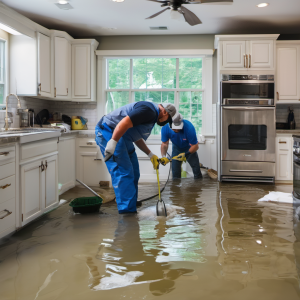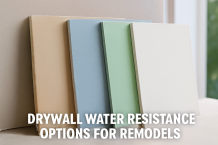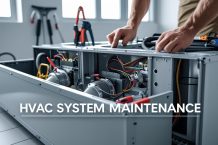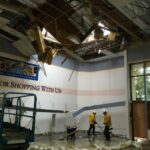Water Removal Tips San Diego CA
In the aftermath of a water-related disaster, time is of the essence. The longer standing water remains in your home or business, the greater the potential for extensive damage, mold growth, and costly repairs. That’s why swift water removal is crucial to prevent further harm and ensure a speedy recovery.
In this article, we delve into the importance of speed when it comes to removing water from your property. We’ll explore practical tips and techniques to mitigate water damage and minimize the risk of long-term consequences. From employing professional water extraction services to utilizing proper drying equipment, we’ll provide you with actionable steps to expedite the water removal process effectively.
By understanding why speed plays a critical role in water removal and implementing preventative measures promptly, you can safeguard your property and save yourself from future headaches. Don’t let water damage linger; take swift action to minimize its impact and prevent further deterioration. Join us as we discover why speed is key in water removal and arm yourself with essential tips to combat water-related disasters effectively.

The Importance of Speed in Water Removal
When it comes to water damage, acting quickly is vital. Water can seep into every nook and cranny of your property, causing significant damage along the way. Whether it’s from a burst pipe, a leaking roof, or a natural disaster, the consequences can be devastating if not addressed promptly.
By removing water as soon as possible, you can minimize the risk of structural damage, mold growth, and other long-term consequences. The longer water lingers, the more it saturates building materials such as walls, floors, and ceilings, weakening their structural integrity. Additionally, moisture provides the perfect breeding ground for mold and bacteria, which can pose serious health risks to occupants
The Potential Damage Caused by Water
Water damage can manifest in various ways, depending on the source and duration of exposure. From visible signs like warped floors and peeling paint to hidden issues such as weakened foundations and electrical damage, the effects of water can be far-reaching and costly to fix.
One of the most common problems associated with water damage is mold growth. Mold thrives in damp environments, and if left unchecked, it can spread rapidly and cause respiratory issues, allergies, and even structural damage. Additionally, water can lead to the deterioration of building materials, including wood rot, rusted metal, and crumbling drywall. These issues not only compromise the safety and aesthetics of your property but also require extensive repairs and restoration.
Understanding the Different Types of Water Damage
Not all water damage is the same. Understanding the different categories can help determine the appropriate course of action for water removal and restoration.
1. Clean Water: This type of water damage occurs when water from a clean source, such as a broken pipe or overflowing sink, floods your property. While it may initially seem harmless, clean water can quickly become contaminated if left standing for too long.
2. Greywater: Greywater refers to water that is slightly contaminated, usually from appliances like dishwashers and washing machines. It may contain chemicals or microorganisms that can pose health risks if not addressed promptly.
3. Blackwater: Blackwater is the most severe type of water damage and is highly unsanitary. It can come from sewage backups, flooding from rivers or lakes, or even stagnant water that has been standing for an extended period. Blackwater contains harmful bacteria, viruses, and other pathogens that can cause severe illness or even death.
Tips for Quickly Removing Water from Your Property
When faced with water damage, taking immediate action is crucial. Here are some practical tips to help expedite the water removal process and minimize further damage:
1. Ensure safety: Before attempting any water removal, prioritize your safety. Turn off the electricity to avoid the risk of electrocution, and wear protective gear such as gloves and boots to prevent contact with contaminated water.
2. Extract standing water: Use a wet/dry vacuum or buckets to remove as much standing water as possible. Start from the lowest point of your property and work your way up, paying attention to areas where water may have accumulated, such as basements and crawlspaces.
3. Utilize fans and dehumidifiers: Once the standing water is removed, it’s essential to dry out the affected areas thoroughly. Place fans strategically to circulate air and promote evaporation. Additionally, use dehumidifiers to reduce moisture levels in the air, aiding in the drying process.
4. Remove wet materials: Discard any porous materials that have been significantly affected by water, such as carpets, drywall, and insulation. These materials can harbor mold and are nearly impossible to salvage once saturated.
5. Clean and disinfect: After removing the water and wet materials, thoroughly clean and disinfect the affected areas to eliminate any remaining contaminants. Use appropriate cleaning agents and follow the recommended procedures for effective disinfection.
6. Monitor and document: Keep a close eye on the drying process and document the progress. Take photos and notes to provide evidence for insurance claims and to keep track of any further damage that may occur.
The Role of Professionals in Water Removal
While it’s possible to do it on your own when dealing with water damage, hiring professionals for water removal is often the best course of action. Experienced water damage restoration companies have the knowledge, equipment, and expertise to efficiently extract water, dry out the affected areas, and prevent further damage.
Professionals utilize advanced techniques such as thermal imaging to detect hidden moisture, industrial-grade fans and dehumidifiers for efficient drying, and antimicrobial treatments to inhibit mold growth. They can also conduct thorough inspections to assess the extent of the damage and provide accurate estimates for repairs and restoration.
Preventing Further Damage After Water Removal
Once the water has been successfully removed, it’s crucial to take preventive measures to avoid future issues. Here are some steps to minimize the risk of further damage:
1. Fix the source: Identify and fix the source of the water damage to prevent future incidents. Whether it’s a leaking pipe, a damaged roof, or poor drainage, addressing the underlying cause is essential to avoid recurring problems.
2. Improve ventilation: Proper ventilation is crucial in preventing moisture buildup and mold growth. Ensure that your property has adequate airflow by opening windows, using exhaust fans, and utilizing air conditioning or dehumidifiers when necessary.
3. Insulate pipes and seal gaps: Insulating exposed pipes and sealing gaps in windows, doors, and walls can help prevent future water damage. These simple measures can protect your property from leaks and drafts, reducing the risk of moisture infiltration.
4. Regular maintenance: Conduct regular inspections and maintenance checks to identify and address potential issues before they escalate. This includes checking for leaks, cleaning gutters and downspouts, and ensuring proper drainage around your property
Common Mistakes to Avoid During Water Removal
While speed is essential in water removal, it’s equally important to avoid common mistakes that can exacerbate the damage. Here are a few pitfalls to avoid:
1. Neglecting safety precautions: Prioritize your safety and the safety of others during the water removal process. Never enter standing water without proper protective gear, and remember to turn off the electricity before beginning any work.
2. Ignoring hidden moisture: Water can penetrate deep into building materials, even if it’s not immediately visible. Failing to address hidden moisture can lead to mold growth, structural damage, and recurring water issues.
3. Delaying professional help: While it’s natural to want to handle water damage on your own, delaying professional assistance can result in further damage and increased restoration costs. Don’t hesitate to contact experts who can provide the necessary expertise and equipment to effectively mitigate water damage cleanup.
The Importance of Proper Drying Techniques
Proper drying techniques are essential to prevent mold growth and ensure a successful water damage restoration drying process. Here are some key considerations:
1. Thoroughly dry affected areas: Ensure that all affected areas are thoroughly dried, including hidden spaces such as wall cavities and under flooring. Moisture left behind can lead to mold growth and further damage.
2. Monitor humidity levels: Use a hygrometer to monitor humidity levels during the drying process. Ideally, humidity levels should be below 50% to inhibit mold growth. If necessary, continue using dehumidifiers until optimal conditions are achieved.
3. Avoid excessive heat: While it may be tempting to speed up the drying process by using high temperatures, excessive heat can cause damage to building materials and promote the spread of mold spores. Maintain a moderate and consistent temperature for effective drying.
Assessing the Need for Repairs and Restoration
Once the water has been removed and the affected areas have been thoroughly dried, it’s essential to assess the need for repairs and restoration. Depending on the extent of the damage, you may need to enlist the help of professionals to restore your property to its pre-damaged state.
Inspect the affected areas for any signs of structural damage, such as warped floors, sagging ceilings, or compromised foundations. Assess the integrity of electrical systems, plumbing, and HVAC units to ensure they are safe and functioning correctly. If necessary, consult with trusted contractors who specialize in water damage restoration to develop a comprehensive plan for repairs and restoration.
Conclusion: Taking Immediate Action for Water Removal
Water damage can have severe and long-lasting effects on your property. Acting swiftly to remove water and mitigate further damage is crucial to preventing costly repairs and health hazards. By understanding the importance of speed in water removal and implementing preventative measures promptly, you can safeguard your property and save yourself from future headaches.
Remember to prioritize safety, remove standing water, thoroughly dry affected areas, and seek professional help when necessary. By taking immediate action, you can minimize the impact of water damage and ensure a speedy recovery.
Don’t let water damage linger; take swift action to minimize its impact and prevent further deterioration. Arm yourself with the knowledge and tips provided in this article, and be prepared to combat water-related disasters effectively. With the right approach and a sense of urgency, you can restore your property and regain peace of mind.
Topic: Water Removal Tips















Follow Us!